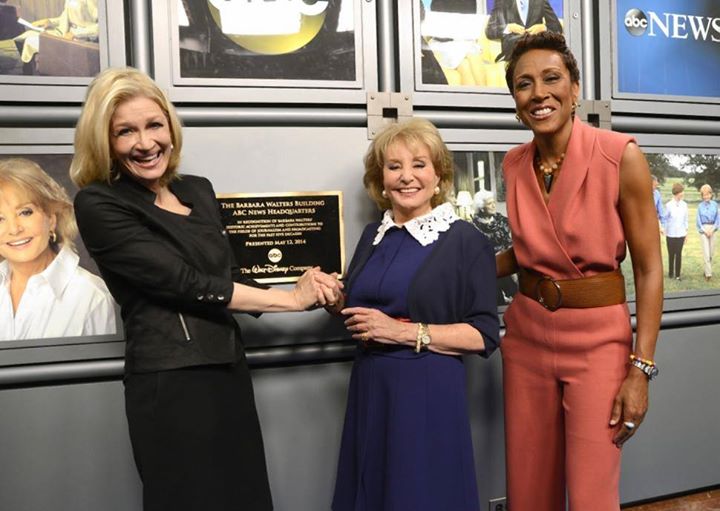- Home
- TV History
- Network Studios History
- Cameras
- Archives
- Viewseum
- About / Comments
Skip to content




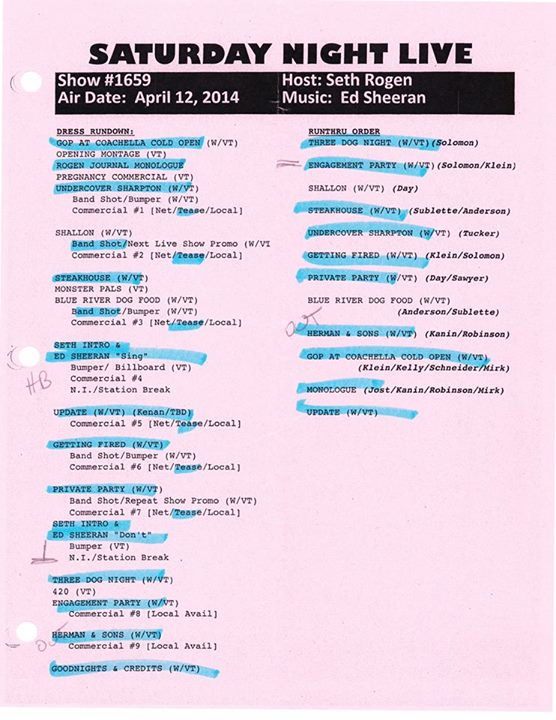

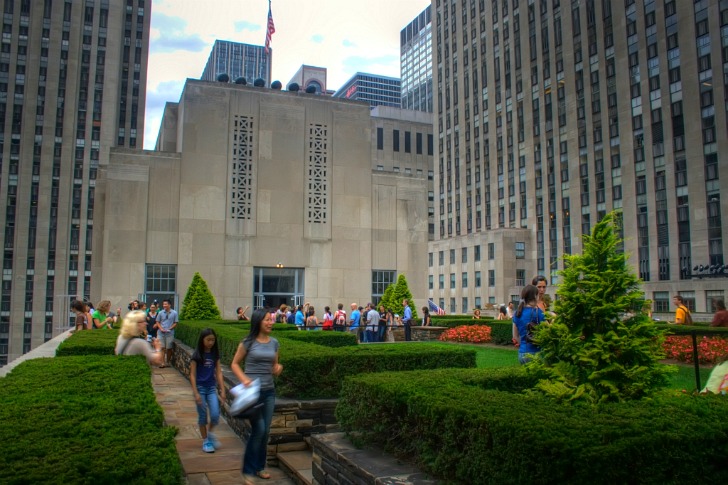

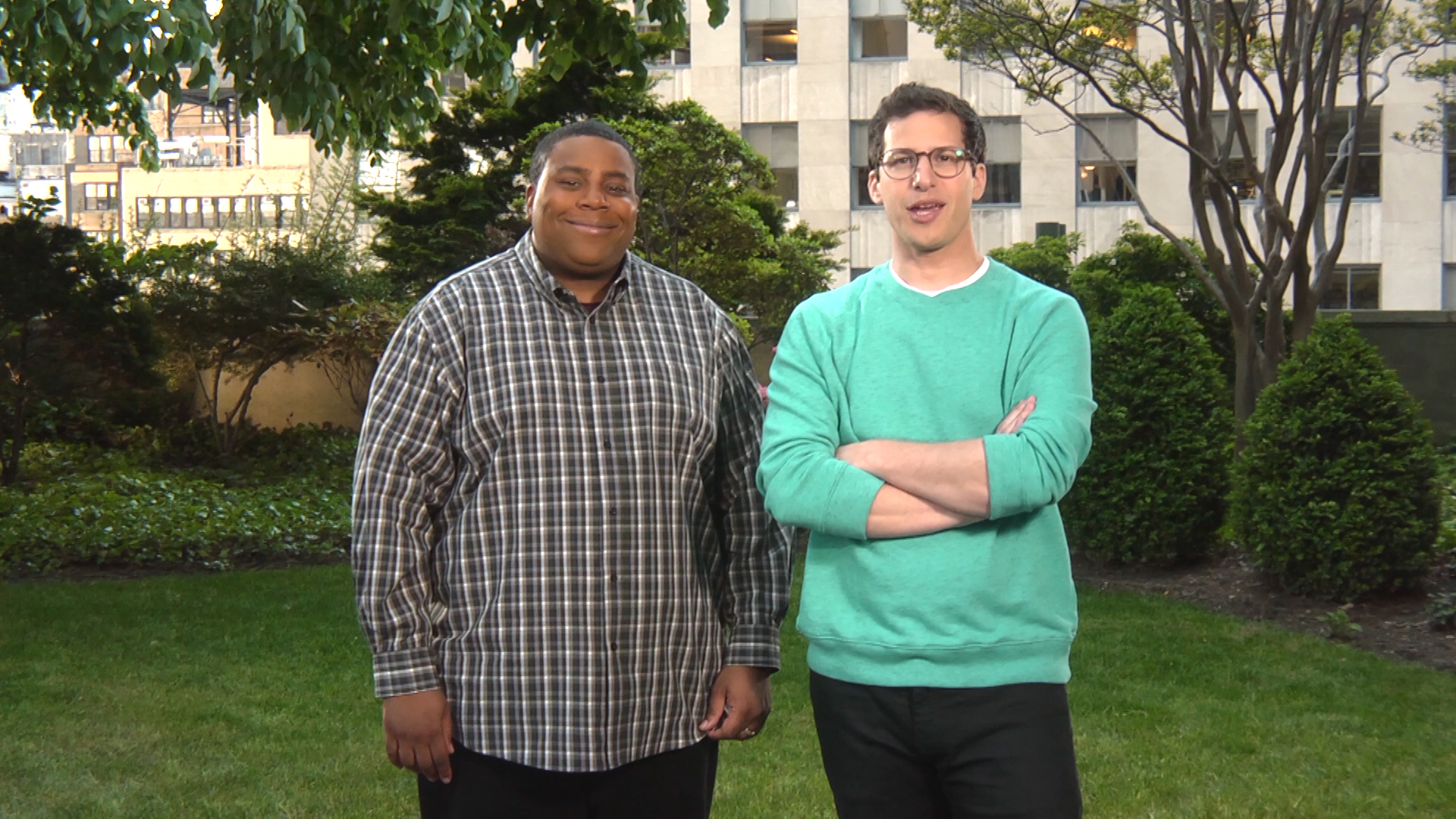



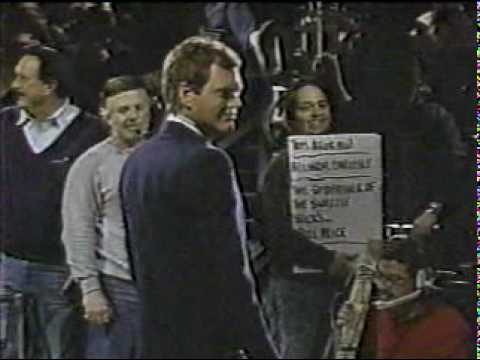























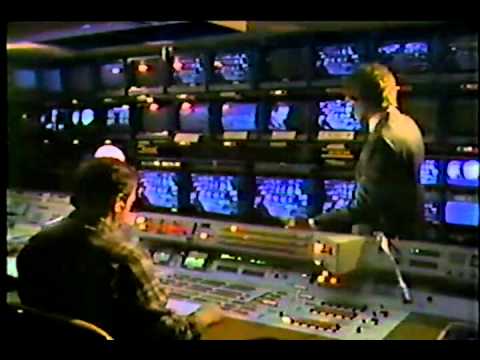

Posts in Category: TV History
Page 81 of 136
« Previous
1
2
3
4
5
6
7
8
9
10
11
12
13
14
15
16
17
18
19
20
21
22
23
24
25
26
27
28
29
30
31
32
33
34
35
36
37
38
39
40
41
42
43
44
45
46
47
48
49
50
51
52
53
54
55
56
57
58
59
60
61
62
63
64
65
66
67
68
69
70
71
72
73
74
75
76
77
78
79
80
81
82
83
84
85
86
87
88
89
90
91
92
93
94
95
96
97
98
99
100
101
102
103
104
105
106
107
108
109
110
111
112
113
114
115
116
117
118
119
120
121
122
123
124
125
126
127
128
129
130
131
132
133
134
135
136
Next » 

Network Television’s First, Live, Country Music Show
On May 18, 2014
- TV History
Network Television’s First, Live, Country Music Show
From July 5, 1953 – September 13, 1953, the Dumont Network broadcast the ‘Old American Barn Dance’ live from 10:30 till 11 on Sunday nights. This was a summer replacement show done from Chicago.
In 1949, ABC had been the first with country music on television with the ‘ABC Barn Dance’, but that was shot on film in Chicago at the WLS radio show ‘National Barn Dance’. Now you wouldn’t necessarily think of Chicago as the home of country music, but truth be told…that was ground zero!
Before there was ‘The Grand Old Opry’, or even it’s predecessor, ‘The WSM Barn Dance’ in 1925, WLS in Chicago had ‘The National Barn Dance’ show which started in 1924. WLS, whose call letters stand for “World’s Largest Store” was owned by Sears and was a 50,000 watt, clear channel powerhouse that covered a good part of the midwest and eastern US. I used to listen to WLS every night here in Atlanta in the late ’60s.
WBAP in Dallas actually had the first live country show TV show in 1948, but their ‘Saturday Night Barn Dance’ was local and very popular.
In Nashville, WSM hired long-time announcer and program director George D. “Judge” Hay, from the ‘National Barn Dance’ program at WLS in Chicago, who was also named the most popular radio announcer in America. Hay launched the ‘WSM Barn Dance’ with 77-year-old fiddler Uncle Jimmy Thompson on November 28, 1925, which is celebrated as the birth date of the ‘Grand Ole Opry’.
On December 10, 1927 the phrase “Grand Ole Opry” was first uttered on-air.
That night ‘Barn Dance’ followed the NBC Red Network’s Music Appreciation Hour, a program of classical music and selections from Grand Opera presented by classical conductor Walter Damrosch. That night, Damrosch remarked that “there is no place in the classics for realism,”
In response, Opry presenter George Hay said: “Friends, the program which just came to a close was devoted to the classics. Doctor Damrosch told us that there is no place in the classics for realism. However, from here on out for the next three hours, we will present nothing but realism. It will be down to earth for the ‘earthy’.”
Hay then introduced DeFord Bailey, the man he had dubbed the “Harmonica Wizard”, saying:
“For the past hour, we have been listening to music taken largely from Grand Opera. From now on, we will present the ‘Grand Ole Opry’.”
http://www.youtube.com/watch?v=qNM_lVNNx5s&list=PLkcjBnooz6qktKtF-iEmBQJN5M_oJakQP&index=2
A Country Music show from 1953. Featuring in order; Bill Bailey, Kay Brewer, The Saddle Pals, Nancy Lee, Kenny Roberts, Homer & Jethro, Doc Hopkins, The Cand…


Inside NBC Studio 8H Video
On May 18, 2014
- TV History
Inside NBC Studio 8H…
Here’s a little over a minute of video shot during the set up session for Rihanna’s band in December of 2009. This is usually done Thursday mornings with load in and sound check done by 1 o’clock and and a run through of the songs done around 2 when camera blocking begins. You can see the schedules in today’s next post.
After the song run throughs, the guest host comes in and the promos with the host and band are shot usually in a 30 to 45 minute window. After promos, sketch rehearsal and camera blocking begins and lasts till around 8 or 9.
http://www.youtube.com/watch?v=gne3CUBxuN0
A peek into SNL rehearsals with Rihanna’s Band, Madhouse. Ashleigh Haney gives a tour of the SNL studio!
‘Saturday Night Live’ Run Sheets…Dress, Air And Map
On May 17, 2014
- TV History
‘Saturday Night Live’ Run Sheets…Dress, Air And Map
With tonight bringing SNL Season 39 to a close, we’re celebrating with all today’s posts focusing on this great American treasure and the world’s only remaining live, variety style network show.
We’ve all heard the stories about the sketches that are cut between the dress rehearsal and live air at ‘Saturday Night Live’, and here you’ll see the real thing. Below is the pink dress rehearsal rundown and the green air rundown sheets from the April 12th show with guest host Seth Rogen.
As you see, sketches get cut and this affects the shows run time and the best place to make adjustments is in the length of ‘Weekend Update’. The dress rehearsal typically runs from 8 till 10 and is a half hour longer than the air version. The best audience received sketches tend to make the cut, but not always as the clock has a say in this too.
In a way, ‘Weekend Update’ is a shock absorber in the context of time. It is typically written long and if only one or two sketches are cut, most of the adjustment can be made in whittling down the Update script between dress and air. When you see long Updates, you can bet three or more sketches were cut.
This is an oversimplification as there are many moving parts to the show and sketches can be edited or extended between dress and air, and even while the show is live. On show nights, between about 8:15 and 12:45, the writers and Q card areas are absolutely the busiest places on earth.
On the right is a set map of this show. I think (at least for Season 39) this is the regular placement of the set locations showing us there are nine stage areas in 8H in addition to the Homebase area. Only Homebase, stage 2 and 3A are actual raised stages with all others being on the studio floor. On this week, we see a tenth area marked ‘Mob Bar’ in front of 4B.
Notice the homebase stage is shown with the “tongue” sticking out. The tongue is a retractable platform that hides under the house band’s stage and is about ten feet long and electrically operated. The tongue is out for the show’s open and close with the guest host monologue and goodby, and stowed for most of the show, except for ‘Weekend Update’ which is done on the tongue.
I’ve heard that Jay Leno like the tongue so much when he guest hosted that he had one built into his ‘Tonight’ show set soon after.
Congratulations to the cast, crew, writers and staff at SNL! Long live ‘Saturday Night Live’! More to come.


Rockefeller Center’s Rooftop Gardens are a Hidden Urban Treasure
On May 17, 2014
- TV History
The Rooftop Gardens At Rockefeller Center…Rare Gems
This is an excellent piece on the gardens with lots of photos but the 30 Rock garden is not mentioned or shown here. Fortunately, much of that can be seen in today’s first post of the SNL promos for tonight’s season finale.
http://inhabitat.com/nyc/the-rockefeller-centers-rooftop-gardens-are-a-hidden-urban-treasure/
Rockefeller Center’s Rooftop Gardens are a Hidden Urban Treasure
Green before it was the norm, the Rockefeller Center buildings boast a handful of rooftop gardens, rarely accessible to the general public.


SNL Promos…The 30 Rock Rooftop Garden
On May 17, 2014
- TV History
SNL Promos…The 30 Rock Rooftop Garden
There are several rooftop gardens in Rockefeller Center, but I think this location is actually on top of the 11 story studio building at 30 Rock, and may even be directly over Studio 8H.
In the comment section below, our friend Dennis Degan has posted links to his photos of the rare gardens in the sky at 30 Rock!
Just For Fun…One Of Television’s First “Mishaps”
On May 15, 2014
- TV History
Just For Fun…One Of Television’s First “Mishaps”
In the late 1930s, when TV was just a baby, there were bloopers and blunders everywhere because it was all new, but this little gem is a bit different! It’s a story I was told on my recent visit to NY and happened in NBC’s studio 3H around 1939.
Sets were pretty flimsy back then but with such low resolution and few viewers, that was OK. The scene being done was between two actors and required one man to go to a wall safe, retrieve a pistol and shoot the other man. The safe’s cover was a piece of cardboard attached to a flat with a hole in it and behind the flat was a stage hand with a blank pistol.
Things had not gone well in rehearsal as the “shooter” had an ego and was being a bit difficult. Human nature being what it is led to an interesting scene in the live broadcast. When the “shooter” went to the wall safe, it opened just fine. Then, the actor stuck his hand in for the gun, but was handed a peeled banana. He quickly tried to hand it back to the stage hand, but instead, four stage hands behind the wall all shook his hand with vigor.
After having his hand in the “safe” for nearly a minute, they finally handed him the gun. The actor immediately shot four times into the hole in the wall and then turned the gun on his fellow actor and pumped the final two shots into him.
I’m sure the audience didn’t know what the hell was going on, especially with all the laughter coming from behind the cameras and the wall. Enjoy and share!


Yet More Classic Letterman…13 Cameras In The Studio
On May 15, 2014
- TV History
Yet More Classic Letterman…13 Cameras In The Studio
If you look closely, you’ll notice there are actually three different kinds of RCA TK47s on the set. The TK47 with multi core cable was introduced in 1978 and we see some of that cable along with triax cable that came with the TK47B in 1982. Like the photo from yesterday that showed the TK47 with extra controls on the rear, we surely have a couple of TK47EP, or Enhanced Performance models here too which debuted at the NAB in 1980. Enjoy and share!
The Durland Riding Club…Now Home To ABC New York
On May 15, 2014
- TV History
The Durland Riding Club…Now Home To ABC New York
As you can read on the photo captions, the Durland Riding Club with it’s academy and stables was built on the site now occupied by ABC in 1901. The building had a front on both 66th and 67th Street, just west of Central Park.
These photos are somewhere in the TV 1 and 2 building I think. The photo on the right is duplicated as I clipped part of the caption in both. A lot of people have looked for these rare Durland photos, including me, but this is the only place I have ever seen them. Enjoy and share!
Barbara Walters… The Stormy Arrival In 1976 And Her Smooth Departure Tomorrow …
On May 15, 2014
- TV History
Barbara Walters…
The Stormy Arrival In 1976 And Her Smooth Departure Tomorrow
On Monday, the ABC News building was re named “The Barbara Walters Building” and these photos are in the lobby of 47 West 66 Street. The ABC News building is among several buildings that make up the ABC complex along 66th Street, between Columbus Ave. and Central Park West, which is also known as Peter Jennings Way, named for the longtime ‘World News Tonight’ anchor who passed away in 2005.
The renaming caps Walters’ 53-year career in broadcast journalism, and honors her as the first woman to anchor a network morning show. She was also the first woman to anchor an evening newscast. Can you believe she helped create ‘The View’ 18 years ago. She’ll formally retire on the show tomorrow.
When Walters came over from NBC’s ‘Today’ show, she was a co anchor of the evening news with Harry Reasoner. That did not sit well with a lot of people and Reasoner was one of them. Here’s the story.
For five years, most of them with Howard K. Smith at his side, Harry Reasoner sat in his anchor chair at ABC handing down good news and bad with the self assurance of Mount Rushmore. But on April 20, 1976, Rushmore registered a 6.0 on the Richter scale when ABC wooed Barbara Walters away from NBC’s ‘Today’ and signed her as an anchor with a record $1-million-a-year contract.
That fall, as she took her seat next to Reasoner (Howard K. Smith had already assumed the role of commentator), she became the first woman ever to deliver the evening news from the main desk. Rushmore was rattled.
Although Reasoner publicly maintained that he didn’t mind Walters ”as a person and as a woman,” he privately voiced his displeasure with her to the ABC brass. The network boosted his salary from $200,000 to $500,000 — the same amount Walters was receiving for her anchor duties (the other $500,000 was for her work on specials). But the tensions wouldn’t go away. ”You know, Harry,” she quipped in one especially embarrassing exchange, ”Kissinger didn’t do too badly as a sex symbol in Washington.” Her counterpart just glared: ”Well, you would know more about that than I would.”
If Reasoner was tough on her, the rest of the media were downright rude — and more than a little sexist. Larry Flynt offered her another million if she would pose nude for Hustler. TIME, sniffing at the tour she gave of her own apartment on her first prime-time special, labeled the 45-year-old journalist 1976’s ”Most Appalling Argument for Feminism.” And Gilda Radner made ”Baba Wawa’s” mild speech impediment a joke on Saturday Night Live.
After two years of low ratings, Reasoner and Walters both left their desks in 1978 and the broadcast changed to a multianchor format. But by then Walters had proved herself more than just a million-dollar baby. She had deftly moderated the final Ford-Carter debate in 1976 and had scored a coup by interviewing Fidel Castro the following year. And in the Barbara Walters Specials she and ABC found a show that continues to be a huge ratings winner. For the specials and her weekly duties on the highly rated 20/20, Walters received an annual salary somewhere around Dan Rather’s — about $3 million.
Although Walters is leaving the day to day part behind, ABC says she’ll will remain an executive producer with ‘The View’ and will make special ABC News appearances as events warrant.
Inside ‘CBS Sunday Morning’
On May 14, 2014
- TV History
Inside ‘CBS Sunday Morning’
This has always been one of my favorite shows. There is a line in a Lionel Richie song that says it all…”easy like a Sunday morning”, and that’s just the way it feels. Actually, that’s the foundation it was built on; to be like the magazine section of the Sunday paper, taken in at a leisurely pace with your morning coffee.
The show has been on since January 29, 1979 and that’s proof that the ‘Sunday Morning’ formula works. The program was created by Robert Northshield and it’s original host Charles Kuralt. The current host of the show is Charles Osgood, who took over duties from Kuralt upon his retirement on April 3, 1994, and has since surpassed Kuralt’s tenure as host. Both are perfect hosts.
This set is located directly across from something we saw here yesterday, the ‘Inside Edition’ greenscreen set in Studio 45 at the CBS Broadcast Center, which is a just over 3000 square feet. When ’60 Minutes’ first began, it shared space with ‘Captain Kangaroo’ and I think it was in this studio.
I’ve always wondered about the show’s trumpet theme. I had always thought the opening was played on a coronet which is smaller than a regular trumpet, but it’s actually played on a piccolo trumpet, which is smaller than a cornet.
The show’s theme is the trumpet fanfare “Abblasen”, attributed to Gottfried Reiche. A recording of the piece on a baroque trumpet by Don Smithers was used as the show’s theme for many years, until producers decided to replace the vinyl recording with a digital of a piccolo trumpet by former ‘Tonight Show’ musical director Doc Severinsen. The current version is played by Wynton Marsalis. I can hear it now, can you?
Did You Ever Wonder Why Early TV Sets Used A Mirror?
On May 14, 2014
- TV History
Did You Ever Wonder Why Early TV Sets Used A Mirror?
Me too, but now I know. As odd as it seems now, the mirror was actually not a bad solution to a big problem.
The first cathode ray tubes for home receivers were actually quite long and a chassis for it would have stuck out from the wall about three feet. Getting people to by a TV set in the late 30s was hard enough…there was very little to see and they were quite expensive, but if it had been so cumbersome an item of furniture, the job would have been even harder.
The answer at RCA and GE was to stand the tube up in a cabinet about the size of a floor model radio of the time. This helped with the integration of a set into living rooms, but required the viewers to stand up too. This was quickly remedied by adding the flip top mirror which could reflect the small eight inch image to seated viewers. Pass the popcorn please.
NBC Chimes History, Part 2
On May 14, 2014
- TV History
NBC Chimes History, Part 2
Here is a page from Broadcasting Magazine’s February, 1950 edition announcing the NBC Chime sound to be the first ever “service mark” to be protected by a US patent.
The article goes on to cover a bit of the history of the chimes, including the 1938 electronic version built for NBC by Richard H. Ranger. As you can see, the “Rangertone” electronic chimes operate much like an old fashioned music box.
For harmonic purposes, each note has seven tuned reeds or metal tines that are picked by the seven teeth on the roller. There are twenty one total teeth on the roller and twenty one tines which generate the famous G – E – C tones with a push of a button. There is much more on the mechanical version and history of the chimes at the link below.
http://www.nbcchimes.info/nbcmech.php


Letterman Roams The Halls During the NABET Strike, 1987
On May 13, 2014
- TV History
The Poor Bastards Never Had A Chance…The NABET Strike, 1987
As we know, Dave loves to play with the staff and crew, but when the technicians strike rolled around, management had to step in and Letterman pulled all the stops to “play” with them. This should start at the intro to ‘Dave’s Record Collection’ which sets up the piece of Letterman roaming the halls of NBC. Enjoy and share!
You Mean There’s No SET??? Inside, ‘Inside Edition’
On May 13, 2014
- TV History
You Mean There’s No SET??? Inside, ‘Inside Edition’
Last week, inside CBS Studio 45, I was stunned to learn that this green screen area is where Deborah Norville hosts ‘Inside Edition’.
Don’t freak out, but this is not the only show done this way and the list of others is growing. In the photos below you see the before and after. The mannequin is a camera test stand in for Deborah, and each day, video checks are done to adjust the chromakey settings so that the effect does not “tear” when the virtual set is added into the mix.
Although the show is videotaped for later playback, this is all done in real time. A key point of a virtual set like this is that the real camera can move in 3D space, while the image of the virtual camera is being rendered in real-time from the same perspective.
That means the virtual scene has to instantly adapt to and mirror the camera’s output including zoom, pan, angle, traveling, etc. This is what differentiates a virtual set from the traditional technique of chromakey.
Integration of camera tracking is done with either optical or mechanical measurements to create a live stream of data describing the exact perspective of the camera. In this case, the tracking is measured digitally by capturing the information generated by the robotic pan heads.
The 3D virtual software used on ‘Inside Edition’ is made by the granddaddy of chromakey innovation, Ultimatte, who’s been on the cutting edge of chromakey hardware and software since 1976. Enjoy and share!

A Recipe for Analog to Digital Video Transfer: Baking
On May 13, 2014
- TV History
The Race Against Time And The Ultimate Dropout…
Our friend Richard Wirth has a new article on how preservationists are reviving videotapes…at least long enough to play them through into a digital format. It is literally a “sticky business”, but thankfully there are people making the effort. Here’s a look at how they are making the old tape stock playable again.
http://provideocoalition.com/pvcexclusive/story/a-recipe-for-analog-to-digital-video-transfer-baking
A Recipe for Analog to Digital Video Transfer: Baking
We had a project come to us recently that required the transfer of ¾ inch videotape to digital files. To those for whom analog videotapes have become a mysterious relic akin to Egyptian hieroglyphs, let it be known that much of our cultural heritage still exists only on this medium.
’60 Minutes’…The Man Behind “The Look”, Arthur Bloom
On May 12, 2014
- TV History
’60 Minutes’…The Man Behind “The Look”, Arthur Bloom
Shown below are photos of the door to the ’60 Minutes’ Studio 33, including a memorial plaque to Arthur Bloom, a major innovator of television graphics.
Arthur Bloom was the award-winning CBS News television director responsible for the distinctive on-screen look of 60 Minutes since its debut. He led the modernization of on-screen graphics at CBS News, and died in 2006, but his legacy lives on.
He was one of the last remaining original 60 Minutes founders still working for the program. Bloom also played a role in helping to train Dan Rather to succeed Walter Cronkite in the CBS News anchor chair in 1981.
Bloom spent his entire 45-year career at CBS and used his keen eye and a symphonic vision of camera work to become one of the medium’s best directors of live political event coverage. His outstanding talent was recognized with the first Lifetime Achievement Award in News Direction from the Directors Guild of America (DGA) in 1995. The same organization had honored him twice before, once for news direction of CBS News coverage of the 1976 Democratic and Republican conventions and, before that, in 1973 for his work on 60 Minutes.
Most of Bloom’s time was devoted to 60 Minutes; he helped to create and then honed the consistent, classy look of the broadcast. Each week he worked in Studio 33 in the CBS Broadcast Center monitoring the program’s studio production and directing the 60 Minutes correspondents as they taped introductions and tags for their reports. He influenced some of the broadcast’s most basic elements, starting with its famous ticking stopwatch.
The first stopwatch was Bloom’s own. The timepiece symbol began as part of 60 Minutes creator Don Hewitt’s idea for “60 minutes of reality” and came to life when Bloom filmed his own Minerva stopwatch. The concept worked well enough to be used at the beginning of the broadcast’s third edition on Oct. 22, 1968.
Soon it was shown between segments, eventually becoming the iconic logo recognized by generations. Bloom updated the logo, but only in barely noticeable ways at intervals of several years. His modernizing touches included the use of slimmer typography and the addition of subtle shading and texture to the logo’s background. He oversaw the stopwatch’s transition from a filmed image to a computer-generated one.
“Artie had an eye for what worked visually and what didn’t – he was invaluable to me,” said Hewitt. “I depended on him to make the broadcast as visually appealing as it turned out to be. He was at my side every step of the way.”
Bloom also helped Hewitt execute the graphic concept for 60 Minutes as a magazine for television, deciding on a mock-up of a magazine page to put behind the correspondent to begin each of the broadcast’s segments. Now also computer-generated, the magazine concept has essentially remained the same.
Bloom also directed and helped launch the program’s off-shoot edition, 60 Minutes II, which was broadcast from 1999 to 2005.
Every four years from 1974 to 1990, Bloom was called on to direct live political coverage, something he embraced with energy and competitiveness.
Network television political event coverage in the 1970s and ’80s reached new heights in its scope and the use of new technology. It became a three-network race to cover the events in the most dynamic way, with Bloom leading the CBS News charge with demands for more cameras and better graphics. The feisty Bloom fought hard and could be very persuading. He got an extra camera for the Republican Convention in 1984 almost by force.
A fun-loving jokester (and slightly built) he jumped from a table onto the back of the 6-foot-5-inch director of technical operations, yelling, “I want that camera!”
Bloom also ushered in new and colorful ways to punctuate the coverage with engaging animation enhanced by the computer that greatly modernized CBS News graphics capabilities. Innovative animation included red, white and blue exploding firecrackers and galloping donkeys and elephants used as “bumpers,” the visuals used between coverage and commercials. Bloom became so well known for these that CBS News staffers had bumper stickers made reading “Bloom’s Bumpers.”
Bloom’s biggest talent was bringing an event to life on the small screen through the lenses of cameras by instinctively and immediately choosing the images that worked from the many camera angles on monitors in front of him. He could orchestrate the images to convey even the subtle sights and sounds of an event.
First, he would lay his “orchestra” out, positioning cameras and selecting their operators based on the individuals’ talents. Once the event began, colleagues marveled at Bloom’s split-second decisions on which cameras to cue, watching him deftly direct up to 17, each strategically placed by him to play a pre-ordained role. Like all live event television control rooms, CBS News’ was chaotic, but as boisterous as Bloom could be, he was in control at all times. As a joke, he once stopped directing, turned his back on the monitor wall and pretended to become disinterested, drawing panicky stares from colleagues.
CBS News political events coverage directed by Bloom includes the Democratic and Republican conventions and the primaries from 1976 to 1988, the 1976 Ford-Carter and the 1984 Reagan-Mondale presidential debates, and all the election nights from 1974 to 1990. He occasionally directed coverage for special news events, such as the return of hijacked TWA Flight 847 (1985) and the Geneva Summit (1985), and “CBS News Special Report: A Celebration of Liberty” in 1986. He also directed documentaries, such as: “JFK: 1000 Days and 10 Years” (1973); “Vietnam: A War That is Finished” (1975); “CBS Reports: Energy: The Fear, The Facts, The Future” (1977); and “Nuclear Arms Debate” (1983).
Bloom saw the transformation of onscreen network reporters into highly compensated television stars beginning in the late 1970s, but never became star struck. So respected was his candor with on-air talent and his talent for television, that Bloom was asked to train rising star Dan Rather, whom he directed on 60 Minutes, to take over for Walter Cronkite in the anchor chair. Bloom coached Rather by taping him reading Cronkite’s script from the night before and then critiquing the read with him.
In another special mission, he served from 1990 to 1992 as special assistant to the president for program production, working with the entire CBS News production staff to assure the quality of its broadcasts.
Bloom joined CBS in the mailroom as a messenger in 1960 at the age of 18. He moved to the News division as a clerk and soon became a member of the DGA, receiving his first directorial assignments at the age of 21. From 1962 to 1965, he served as an associate director and director at WCBS-TV, the CBS Owned station in New York. In 1966, Bloom was named an associate director for CBS News and, in 1968, was named a director/producer when he was asked to direct the launch of 60 Minutes.
The above article is courtesy of CBS News.com.
http://www.cbsnews.com/news/60-minutes-founder-arthur-bloom-dies-29-01-2006/
’60 Minutes’ And The Green Screens At CBS
On May 12, 2014
- TV History
’60 Minutes’ And The Green Screens At CBS
As a followup to the photos of the current set, I thought it would be fun to take a look back. On the left is one of the original set chairs from ’60 Minutes’ on display in the lobby of the CBS Broadcast Center.
It is very likely one of the same chairs seen in Glenn Mack’s 1973 photo of the old set which shared space with ‘Captain Kangaroo’ in what I think was Studio 46 or 47. ’60 Minutes’ has always used the chroma key effect on the story set ups with each reporter. Moving from the blue to the green backgrounds may have started on the ‘CBS Evening News With Walter Cronkite’ around 1970.
Below left is Dan Rather delivering the weekend news on Sunday, March 4, 1973 with a green screen map. I think this is Cronkite’s desk, but an not sure. More on Walter’s desk in the next post! You’ll see where it was and what’s there now.
’60 Minutes’…On The Set
On May 12, 2014
- TV History
’60 Minutes’…On The Set
With so much green screen around, it was a nice surprise to find the ’60 Minutes’ set dressed in blue. When CBS started buying Norelco PC60s by the dozens in 1965, a medium blue was the prefered chroma key background then, but by around 1970 green began to take over as wardrobes have more blue than green accents, making it easier dress the talent.
CBS was one of the first to move to the medium green backdrop, but there will be more on this in the next post. This is almost indigo, and as you can see, there is a mat on the floor to prevent scuffs to the set and keep the effect pristine.
There are two cameras on this set; one a ped camera and the other is mounted on a small jib. On the right is a shot of the prompter control area. Most of the main CBS Broadcast Center studios are huge, but this is a small, intimate space…just big enough for the cameras to have some depth and be able to move around.


The Special Effects Lesson…More Classic Letterman
On May 12, 2014
- TV History
The Special Effects Lesson…More Classic Letterman
On March 17, 1983, Dave takes a walk down the hall to NBC’s Studio 6A control room for a demonstration of some of the video effects the show uses. Director Hal Gurnee is there along with Emmy winning TD Terry Rohnke. This was episode 24 of season 2. Enjoy and share!
http://www.youtube.com/watch?v=jWzQXCNjz78
Dave takes us into the control room to demonstrate some special effects. Also seen are director Hal Gurnee and technical director Terry Rohnke.
Page 81 of 136
« Previous
1
2
3
4
5
6
7
8
9
10
11
12
13
14
15
16
17
18
19
20
21
22
23
24
25
26
27
28
29
30
31
32
33
34
35
36
37
38
39
40
41
42
43
44
45
46
47
48
49
50
51
52
53
54
55
56
57
58
59
60
61
62
63
64
65
66
67
68
69
70
71
72
73
74
75
76
77
78
79
80
81
82
83
84
85
86
87
88
89
90
91
92
93
94
95
96
97
98
99
100
101
102
103
104
105
106
107
108
109
110
111
112
113
114
115
116
117
118
119
120
121
122
123
124
125
126
127
128
129
130
131
132
133
134
135
136
Next » 